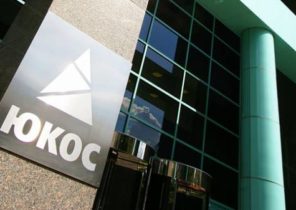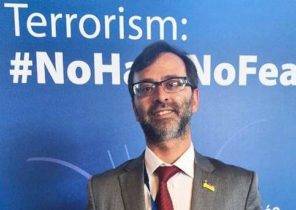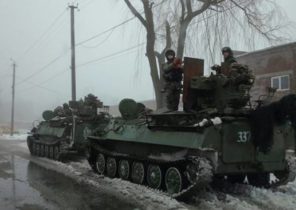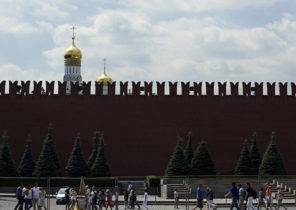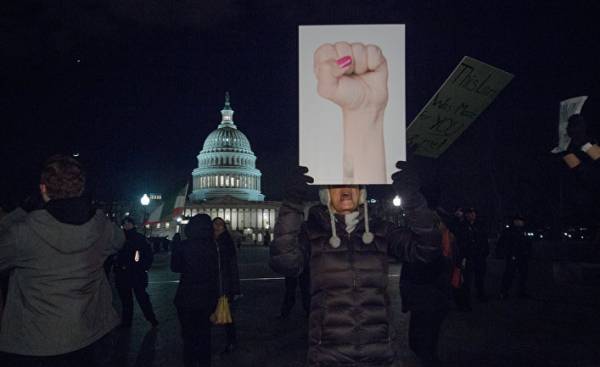
In his science fiction novel “Stranger in a strange land” in 1961, Robert A. Heinlein chose a Muslim linguist “Dr. Mahmoud” to help the main character of the book, brought up by the Martians, to make the transition to life in the United States. A stranger can be an invention, but the selection Heinlein interpreter of the Muslim is based on reality. In fact, people from the Middle East and North Africa (MENA) was the “interpreter” innovation and discovery in the United States for decades.
A recent study that I conducted together with two colleagues from the Austrian Institute of technology, George Bernard Zahradnicka and DAX, in order to shed light on the role played by persons of Arab, Kurdish, Persian and Turkish origin in the development of American technology, relied on patent data filed in the United States. We began our investigation after the President of the United States Donald trump ordered a ban on nationals from six predominantly Muslim countries entering the United States (the list originally included Iran, Iraq, Libya, Somalia, Sudan, Syria, and Yemen and later Iraq was removed).
What we found was not a surprise to us. But those on whom the responsibility for the fact that the United States remained the world leader in promoting new ideas to market, is to worry.
In 2013, lived in the US, about one million immigrants from the MENA countries, which accounted for 2.5% of the 41.3 million of all immigrants in the country. About 43% of immigrants from MENA to the age of 25 years and older had a bachelor’s degree or higher compared to 28% of all immigrants in the United States and 30% of native Americans. If this statistic was included about a million people of Persian and Turkish origin, indicators for educational level, probably would have been even higher.
In order to determine the contribution of immigrants from MENA countries in innovation USA, we have compared about 2500 characteristic of MENA names with the patent documents filed at the world Intellectual property Organization (WIPO). We found that from 2009 to 2013, organizations of the United States or by persons residing in the United States, was filed 13180 patent applications, among which at least one applicant had a name from the MENA region. This is 5.1% of all patent applications of the United States in WIPO in the period 2009-2013. And since we chose only the names specific to the countries of MENA, MENA many inventors that have names common in other ethnic groups, for example, biblical names, were left without attention. The actual figures are certainly higher.
To objectively consider these results in perspective, whereas we studied a five-year period, we found that among monthly applications for U.S. patent was from 220 individuals belonging to MENA. The number of patent applications filed by U.S. inventors with the origin of the MENA countries was twice higher than in the European Union. California accounted for 15% of all patents requested by the inventors relating to MENA and around the world. Only Turkey has a greater number of proposals from inventors originating from MENA countries.
Other States with significant number of applications for patents from persons relevant to the MENA were Texas and Massachusetts. For example, Texas in the period 2009-2013 filed only slightly less applications than Saudi Arabia.
At first glance, the immigration measures taken by the administration trump, should not cause serious concern. The flow of investment in research and development between the United States and the countries to which they apply remains insignificant. But the more individuals originating from the MENA countries will be subjected to the so-called extreme checking, the fewer people from the region will move to the United States. This reduction will have a tangible effect, as the inventors of MENA, typically employed in those technological fields that lie at the heart of American innovation.
Even citizens from countries with visa-free regime with middle Eastern names, are requested to obtain a visa to travel in USA. These measures affected foreign visitors USA of different categories from the French historian Henri Russo, born in Egypt, to African trade delegations from Nigeria, Ghana, Sierra Leone and South Africa. No wonder people from all over the world are thinking twice about visiting the United States. App Hopper, representing the provisional value of the tickets, reported a decline in online flight search in the U.S. by 17%, a few weeks after the ban trump was first proposed.
The United States more than any other country in the world vulnerable to the impact of immigration restrictions on innovation. From 2000 to 2010, the United States had eight times more patents filed by immigrants (194 600) than their nearest competitor, Germany (25 300). Depending on the discipline from 24% to 80% of scientists and engineers working in the United States, are foreigners.
In other words, immigration restrictions put USA in which 30% of Nobel laureates in the country were born in another place, the risk of losing its attractiveness to foreign talent. University science departments, particularly in such disciplines as engineering, depend heavily on foreign students. Without access to this pool of talent in some departments’d have no choice but to close. If restrictive immigration policy continues, U.S. companies may have to move the majority of its activities outside the United States. Given the permanent visa and obstacles at border crossings, the U.S. company may find it advantageous to transfer their production and jobs outside the country.
In the novel “Stranger in a strange country,” Dr. Mahmoud describes the “vulgar” American character as “loud, probably ignorant and almost certainly provincial”. For many living and working in the US, inventors belonging to the MENA, and especially for those who want to move to the United States, feature of Mahmud and today has not lost its relevance. For all others there is no need in translation.


